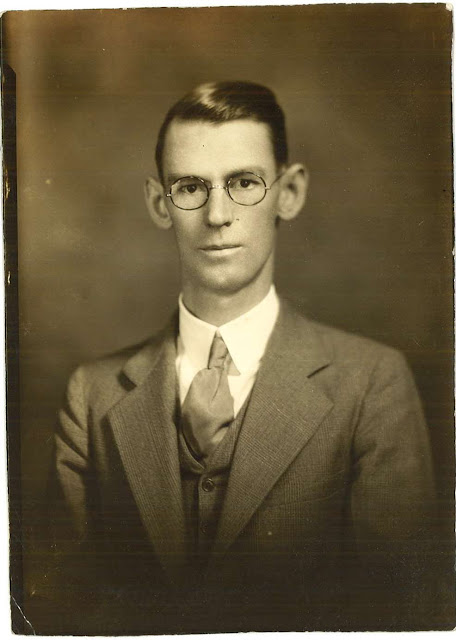 |
| John Ridley Stroop, about 1932 |
John Ridley Stroop (1897-1973) has had a small but estimable influence on art history via a fellow Southerner, Jasper Johns. In 1929 Stroop was working towards a Ph.D. in psychology. He invented a classic demonstration of cognitive dissonance. You are presented with a list of color names in the "wrong" color of ink (or pixels). The challenge is to call out the colors rather than read the words. It's hard. The left brain struggles to say "blue" when the retina sees
RED. A typical reaction to Stroop's test is nervous laughter.
 |
| Jasper Johns, False Start, 1959 |
Jasper Johns learned of the Stroop effect and adopted it as a motif in the late 1950s. It inaugurated the artist's use of visual illusions and ambiguity. The Broad's "Jasper Johns: 'Something Resembling Truth'" includes several major Stroop effect paintings, such as
False Start (1959) and
Field Painting (1963-64). Johns has retained both in his personal collection.
 |
| A Stroop test card c. 1932 |
Stroop lived until 1973. He easily could have known of Johns' paintings, but I've not read anything indicating that he did. Stroop kind of dropped off the radar. After getting his Ph.D., he left psychology to become a bible scholar and preacher in his native Tennessee and surrounding states.
Despite his brief psychological career, Stroop's name is known to every Psychology 101 student. Today the Stroop effect is used to study distraction, anxiety, and information overload—the holy trinity of our digital age. The words do not have to be color names. When they are foods (
HAMBURGER,
PIZZA) a hungry subject is distracted by the semantic content and struggles to name the colors she sees. Someone who had just eaten has less of a problem, as quantified by the time it takes to name the colors. Similar Stroop tests are used to gauge reactions to buzzwords in political ads and the hazards of texting and driving.
 |
| Jasper Johns, Field Painting, 1963-64 |
Meanwhile Johns applied his maxim, "Take an object. Do something to it. Do something else to it" to the Stroop effect.
Field Painting is a combine with 3D letters, one a neon light.
Periscope (Hart Crane) goes meta. It's a Stroop painting and a gray painting. Monochrome is the "wrong" color for a Stroop test.
 |
| Jasper Johns, Periscope (Hart Crane), 1963 |
Johns once enumerated "the qualities which interest me—literalness, repetitiveness, an obsessive quality, order with dumbness, and the possibility of a complete lack of meaning." He was speaking of his crosshatch paintings, but his words also describe the flags, targets, maps, and Stroop effects. Like a map, a painting of a Stroop test is a Stroop test. It is what it is.
Nothing is more literal, dumb, and meaningless than words that say the wrong thing, or nothing at all.
 |
| Small detail of Jasper Johns' Souvenir, 1964 |






Comments